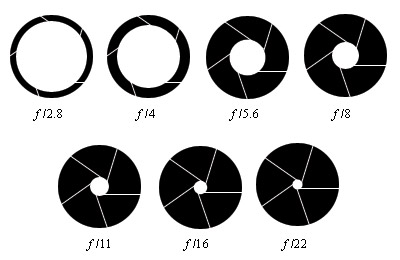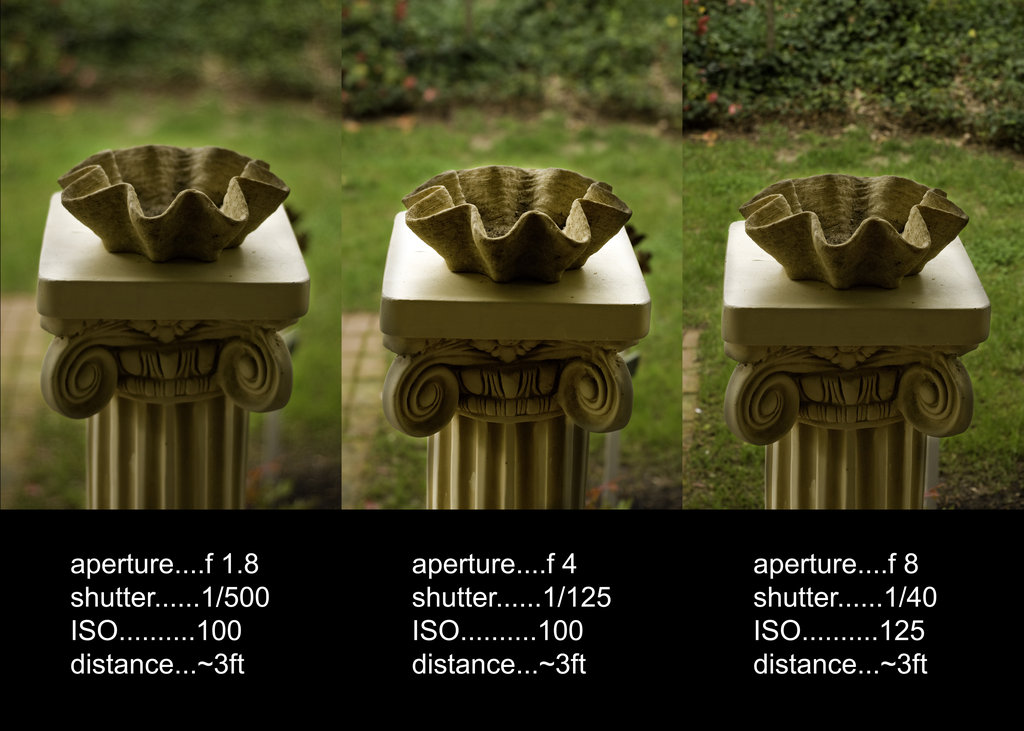Metering:
Helps your DSLR determined the correct shutter speed needed to capture an image.
Types:
Spot
Partial
Centre Weighted
Evaluation
Spot:
Reads light from a small area (approx 3%)
Very Accurate
Useful for backlit subjects, Portraits and Macro
(Generally Central)
Centre Weighted:
Reads the light through the whole frame, with extra bias towards the centre of the subject
Good for general photography but an 'older' way
Evaluation:
Reads the light through the whole frame, evaluating the scene as a whole.
Excellent for general
Class Exercise:
ISO 400
P mode
 |
| Evaluation |
 |
| Partial |
 |
| Centre Weighted |
Apertures:
AV Mode on camera (this mode will still allow you to select ISO speed)
Is the control for the amount of light that your lens will let through the sensor.
The smaller the number the larger the hole. Avg. 5.6 with generally f2.8 the smallest and f22 the largest.

Also allows you to control the 'depth' of field.
- wide open aperture allows for shallow depth of field (blurred background, Portraits - isolation of subject)
- small aperture allows for deep depth of field (landscape - everything sharp)
Wide open apertures allow for faster shutter speed as it allows more light to hit the sensor (eg. football match - freeze action)

Class Exercise:
 |
| Wide (Low) |
 |
| Small (High) |
 |
| ISO 400, f5.6 |
 |
| ISO 400, f8.0 |
 |
| ISO 400, f16 |
Things to remember:
Avoid using Apertures above f16 on a APS-c sized sensor or f22 on a full frame sensor - using settings above these will introduce a phenomenon know as diffraction which will actually soften the image.
The 'sweet spot' on all lenses is usually 2-3 stops above the minimum aperture - this setting (in general) would give you the sharpest results. (Note mine would be 5.6)
If shooting 'wide open' eg. f1.8 during a bright day your image may become over exposed as too much light will be hitting the sensor.
Using long focal lengths will decrease depth of field - great for portraits/isolation
Using wide focal lengths will maximise depth of field - great for landscapes

Agh! too much science -brain hurty now :(
ReplyDelete